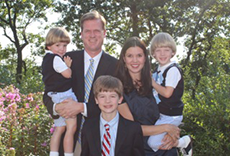
 Little G and I climbed to the top where we saw this:
Little G and I climbed to the top where we saw this: Love these photos, snapped as we meandered through the streets:
Love these photos, snapped as we meandered through the streets:
 We made our way to the Old Town Square where we enjoyed a lovely picnic lunch, at least until I surprised the little ones with assumingly innocent lollipops. That is a story to remember, but not one to forever record in black and white!
We made our way to the Old Town Square where we enjoyed a lovely picnic lunch, at least until I surprised the little ones with assumingly innocent lollipops. That is a story to remember, but not one to forever record in black and white! This is where our guided tour begins, Church of Our Lady Before Tyn:
This is where our guided tour begins, Church of Our Lady Before Tyn:
 We made our way next to Josefov, the Jewish Quarter, an area of town dating back to the 13th century. This is the Spanish Synagogue, built in 1868 on the site of the oldest Prague Jewish house of prayer, the Old Shul:
We made our way next to Josefov, the Jewish Quarter, an area of town dating back to the 13th century. This is the Spanish Synagogue, built in 1868 on the site of the oldest Prague Jewish house of prayer, the Old Shul: And here is the Old New Synagogue, Europe's oldest active synagogue and one of the earliest Gothic buildings. Franz Kafka attended this synagogue when he lived in Prague and his bar mitzvah was held here:
And here is the Old New Synagogue, Europe's oldest active synagogue and one of the earliest Gothic buildings. Franz Kafka attended this synagogue when he lived in Prague and his bar mitzvah was held here: According to another Prague legend, in the 16th century, an old Jewish man named Rabbi Loew lived in this area. During that time, the Jewish people of Prague were being attacked and lived their lives in fear. Rabbi Loew decided to protect the Jews against pogroms by creating the Golem, a giant who was made of clay from the banks of the Vltava. The Rabbi built the Golem and made him come to life by reciting a special incantation in Hebrew. The word emet, meaning truth, was placed on the Golem's forehead.
According to another Prague legend, in the 16th century, an old Jewish man named Rabbi Loew lived in this area. During that time, the Jewish people of Prague were being attacked and lived their lives in fear. Rabbi Loew decided to protect the Jews against pogroms by creating the Golem, a giant who was made of clay from the banks of the Vltava. The Rabbi built the Golem and made him come to life by reciting a special incantation in Hebrew. The word emet, meaning truth, was placed on the Golem's forehead.The Golem would obey the Rabbi's every order and would help and protect the people of the Jewish Ghetto. However, as he grew bigger, he also became more violent and started killing people and spreading fear. Rabbi Loew was promised that the violence against the Jews would stop if the Golem was destroyed. The Rabbi agreed. By removing the first letter from the word emet, thus changing it to met, meaning death, life was taken out of the Golem. According to legend, the Golem was brought back to life by Rabbi Loew's son.

 This is the Old Town Hall which was built in 1586 but remodeled with a pink Baroque facade in the 18th century. This photo shows the famous Hebrew Clock whose numbers are in Hebrew and run backwards:
This is the Old Town Hall which was built in 1586 but remodeled with a pink Baroque facade in the 18th century. This photo shows the famous Hebrew Clock whose numbers are in Hebrew and run backwards: One of the most interesting sights from our tour was the Old Jewish cemetery. This cemetery was used from 1439 to 1787 and is the oldest existing Jewish cemetery in Europe. The Nazis made it a policy to destroy Jewish cemeteries, sometimes using the tombstones for target practice, but Hitler ordered that this cemetery be left intact, since he was planning to build a Jewish museum in Prague after all the Jews in Europe had been exterminated.
One of the most interesting sights from our tour was the Old Jewish cemetery. This cemetery was used from 1439 to 1787 and is the oldest existing Jewish cemetery in Europe. The Nazis made it a policy to destroy Jewish cemeteries, sometimes using the tombstones for target practice, but Hitler ordered that this cemetery be left intact, since he was planning to build a Jewish museum in Prague after all the Jews in Europe had been exterminated.There are more than 100,000 Jews buried in this small plot, the graves being layered 12 deep in some places. This is not unusual for European cemeteries where space is at a premium.








No comments:
Post a Comment